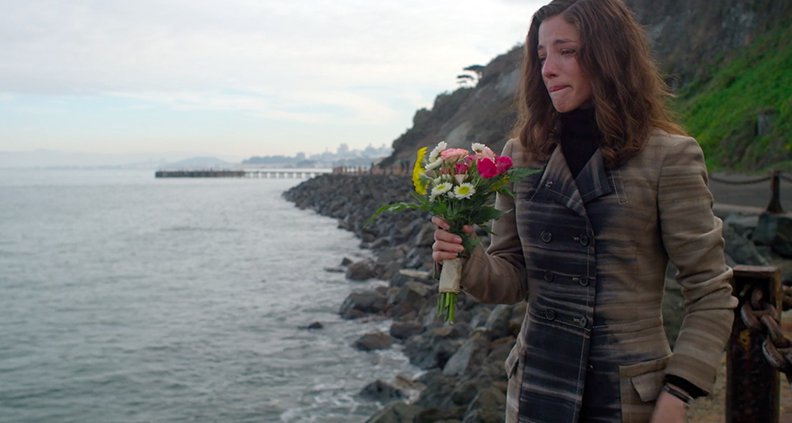A Filmmaker’s Guide to Navigating the Digital Intermediary Process
Have you ever been astounded by the use of color in one of your favorite films? As a filmmaker color can create a “mood palette” that serves to enhance the quality of your storytelling, giving your film a distinctive visual identity and helping to emphasize its themes and subject matter. So once you’ve locked the picture, the meticulous and fastidious digital intermediate (aka “DI”) process is ready to begin!
DI, or “color-grading,” occurs in post-production. Here, regardless of whether you’re using a complicated suite of digital techniques at a high-end Hollywood color grading facility or simply the tools available on prosumer editing programs, the colors of your film are enhanced, fine-tuned and adjusted to cement the film’s visual aesthetic. As most would argue, the DI finishing process enhances your film’s identity to a profound extent and is a crucial step toward making a visually striking motion picture.
On April 2, Film Independent welcomed back editor and post supervisor Bill Macomber, CEO of Fancy Film Post Production, to discuss his extensive experience in the digital filmmaking world—with an emphasis on digital intermediaries, color grading and finishing. Lending his expertise to help explain color-grading workflow, Macomber clued would-be post-producers in about the nitty-gritty of the digital intermediary process. Here are a just a few of the highlights…
THE COLOR-GRADING PROCESS

It was immediately evident that within this world, there’s a confluence of artistry and opinion among creatives. As Macomber emphasized, the more you know the more you can participate in the color-grading process. “I think, ironically, a lot of what [my technical team and I] worry about the most goes unnoticed by filmmakers because we’re just trying to keep it cool and clean,” he said. “So if somebody says, ‘I want to shoot with the Alexa,’ ask them: What color space are you going to work in? What raster are you going to work at? What cards are you recording to? There’s a trail of breadcrumbs back to the DI.”
According to Macomber, the customer is always right. But! Once your film enters under the colorist’s wing, as a filmmaker you are somewhat trapped in the colorist’s ecosystem. “There’s a diplomacy in the DI field that’s super important—and this is something you can notice yourself, or you can notice happening to another creative in the room,” said Macomber. If an arrogant colorist steps in and says that your vision is flawed, and that your lead actress will look magenta or green if you try it, a filmmaker should stick up for their vision for the film, he says.
But if the director is stuck on some intellectual idea—or if the colorist is making the film a little too conventionally beautiful—there can likewise be a clash. “This actually goes back to my editor days,” said Macomber. “When you’re an editor, you’re driving the car, and everybody else is in the car with you. I’ve found that it’s better to drive where they want to go.” Because at some point, he said, the director will likely say, “Oh, you’re right, this doesn’t work.” In most cases, there’s no other way to convince someone but to just do it and see how it goes.
So take a couple of scenes, follow the director’s lead, and then screen those scenes on different TVs or monitors in order to test the results. “When you’re in a good DI facility, you’re hitting the bull’s-eye.” Macomber said. “If the results are badly color-timed and the director’s idea just isn’t working, that’ll be reflected very clearly. Even though you’re viewing on lots of non-professional monitors, they should all look relatively good. They won’t match your professional reference monitor, but they will be grouped around it in terms of color representation.”

Macomber highlighted the importance of the relationship between the film’s director of photography and its colorist. While DP’s are tasked with setting up the scene perfectly and precisely in production, colorists, too, work in an extremely controlled environment to perfect the final product. The result—at the DI stage—can sometimes be a case of too many cooks in the kitchen.
“There are times where you [the DP] need to understand what the dynamic is from the post side,” said Macomber. So he advises to keep these questions in mind: “Do you really want to listen to this DP? Do we want them in the room? If we do, are they doing the first two days and then the director’s stepping in?” Ultimately, as is the case with the DP, the colorist’s client is the filmmaker.
Continuing, Macomber said: “The fact is, colorists want DPs to like them. The colorist wants to be that DP’s colorist forever—they want loyalty.” Treating each other with deference and respect will help ensure the vision of the film is achieved. As Macomber noted: “It’s one of those situations where, as a DP, if you’re coming in showing respect to [colorists], it’s going to be a very positive relationship.” So demonstrate professionalism at all times!
It never hurts to ask yourself: Why are we even making movies in the first place? “If you want people to watch this film on an iPhone, then make sure it looks good on an iPhone,” said Macomber. “If you only want people to see this in a theater, then by God go out and find a DI house that will give you a theatrical color and dig. Dig down to the root of why you’re making movies.”
Said Macomber: “Part of DI, part of finishing, is this question. Think of when you had the idea for your first feature. This question—Why are you making movies?—was always on your mind.” According to Macomber, “you need to re-summon it [in color-grading and finishing] too.”
To learn more about Bill Macomber and his work, please check out Fancy’s website and read up on some of the company’s work on IMDb Pro.
Learn how to become a Member of Film Independent by visiting our website, and click here to subscribe to our YouTube channel. Also, don’t forget to follow Film Independent on Facebook, Twitter and Instagram.